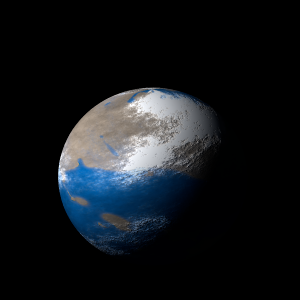|
|
Space Astro
|
Info for exoplanet "Pasiste Stetea"
| Scientific (actual) data |
|---|
| Name | Kepler-677 b |
| Planet status | Confirmed |
| Radius | 0.48 |
| Orbital period | 6.57532 |
| Discovered | 2016 |
| Updated | 2021-02-05 |
| Tconj | 2455010 |
| Publication | Announced on a website |
| Detection type | Primary Transit |
| Alternate names | 2MASS J19202353+5019177 b, K00782.01, KIC 11960862 b, KOI-782 b, KOI-782.01 |
| Star name | Kepler-677 |
| Right ascension | 290.1° |
| Declination | 50.32° |
| Mag j | 14.071 |
| Mag h | 13.793 |
| Mag k | 13.686 |
| Star distance | 1180 |
| Star metallicity | 0.06 |
| Star mass | 1 |
| Star radius | 0.99 |
| Star age | 4.57 |
| Star temperature | 5723 |
| Star alternate names | 2MASS J19202353+5019177, KIC 11960862, KOI-782 |
| Wikipedia article | Kepler-677 b |
Back
| |
| Fictional info (?) |
|---|
| Suggested name | Pasiste Stetea |
| Planet type | Cold planet |
| .
The volume of water detected has been estimated to be equivalent to the volume of water in Earth's oceans. |
| Atmosphere | Hydrogen chloride | 91% |
| Hydrogen peroxide | 8.4% |
| Molecular hydrogen | 0.038% |
| Argon | 0.001% |
| Methane | 1.8E-5% |
| Atmospheric pressure | 0.018 bar |
 |
| No known satellites |
| Google search for Pasiste stetea |
|
Website by Joachim Michaelis
|
|
|
|